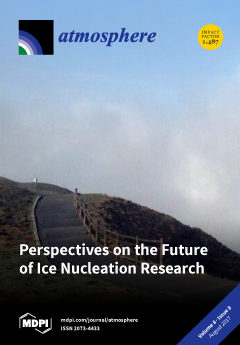This work reports the chemical and light extinction characteristics of the atmospheric particles collected from January to November 2014 in suburban Nanjing. Size-segregated measurement results showed that more than 80% of the major aerosol components were concentrated in PM
2.5. The concentration of PM
2.5 was highest in winter and lowest in autumn. Specifically, K
+ concentration peaked in late spring indicating heavy influences from straw burning, while sulfate concentration was highest in summer and its daytime concentration was also higher than its nighttime concentration, both reflecting a significant role of photochemical production. Nevertheless, except for sulfate, all other components had higher concentrations during nighttime, signifying the role of unfavorable meteorological conditions in exacerbating the air pollution. The IMPROVE formula was employed, which can reconstruct the PM
2.5 mass and light extinction well. The light extinction was mainly contributed by (NH
4)
2SO
4 and NH
4NO
3 (together 58.3%). Mass concentrations of all PM
2.5 components increased significantly with the increase of pollution levels, but nitrate increased most rapidly; correspondingly, the contribution of nitrate to light extinction also increased quickly when pollution became heavy. Such results were different from those observed in Beijing-Tianjin-Hebei where sulfate increased most quickly. Our results thus highlight that reduction of vehicular NO
2 is likely a priority for air quality improvement in Nanjing. Back trajectory analysis showed the dominance of the local air mass and the one from Huanghai, yet the air mass originated from Bohai, and passed though Shandong and north of Jiangsu province could deliver highly-polluted air to Nanjing, as well.
Full article





